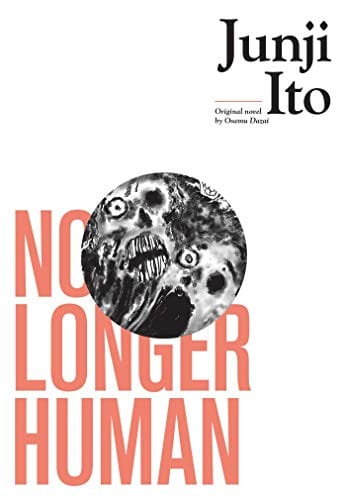No Longer Human: Osamu Dazai’s Timeless Exploration of Alienation
Explore the plot, themes and cultural impact of Osamu Dazai's classic novel "No Longer Human," a haunting study of alienation that still resonates today.

Introduction
First published in 1948, "No Longer Human" (Ningen Shikkaku) by Osamu Dazai remains one of Japan’s most widely read and hotly debated novels. Often classified as semi-autobiographical fiction, the book follows the fragmented memoirs of Ōba Yōzō, a man who feels fundamentally disconnected from society and from his own sense of self. For readers searching for a raw, unfiltered depiction of alienation, depression and post-war malaise, Dazai’s masterpiece offers an uncomfortably honest mirror. This article explores the plot, themes, style and cultural legacy of "No Longer Human" while offering tips for first-time readers.
Plot Overview
The novel is framed as a collection of three "notebooks" discovered by an unnamed editor. In them, Ōba Yōzō recounts episodes from childhood to his late twenties, charting his spiraling journey from anxious clown to alcoholic drop-out and, ultimately, to attempted suicide. As a child, Yōzō survives by performing comedic antics designed to mask an ever-present terror of being discovered as inauthentic. His isolation sharpens when he moves to Tokyo for school, where he drifts into bohemian circles, substance abuse and exploitative relationships. Each notebook peels away another layer of self-deception, revealing an individual who feels he has forfeited the right to call himself human. The narrative ends ambiguously: Yōzō is physically alive but psychologically erased, housed in a sanatorium while the people who enabled or abandoned him forge ahead with ordinary lives.
Major Themes
Alienation and Inauthenticity
Yōzō’s central confession—"I have always been acutely aware of my own inhumanity"—captures the novel’s driving theme: the terror of being fundamentally different. Unlike classic coming-of-age stories, "No Longer Human" offers no triumphant reconciliation. Instead, the protagonist’s attempts at social mimicry only amplify his profound sense of fraudulence.
Mental Illness and Addiction
Dazai writes with astounding candor about depression, alcoholism and opioid dependence. Long before mental health entered mainstream conversation, the novel exposed how untreated psychological pain can evolve into self-destructive behavior. Yōzō’s addictions serve both as coping mechanisms and as catalysts accelerating his downfall.
Post-War Disillusionment
Although the story is deeply personal, it also captures the national mood of post-World War II Japan. Economic ruin, moral uncertainty and the loss of imperial ideology created fertile ground for existential despair. Yōzō embodies that collective disorientation, offering international readers a glimpse into a pivotal historical moment.
Narrative Style
Dazai’s prose is deceptively simple—lean sentences, sparse descriptions and almost clinical honesty. Yet beneath the surface lies intricate emotional layering. The editor’s preface and afterword create a metafictional frame, inviting readers to question the reliability of Yōzō’s testimony. Is he an honest reporter of his inner life, or has self-loathing distorted every recollection? This uncertainty keeps the novel psychologically gripping and endlessly rereadable.
Cultural Impact
"No Longer Human" has sold millions of copies in Japan and has been translated into dozens of languages. It has inspired manga adaptations, films, stage plays, and countless references in Japanese pop culture—from hip-hop lyrics to anime storylines. In literary circles, Dazai is often compared to Kafka, Camus and Dostoevsky for his exploration of alienation and absurdity. The book’s candid portrayal of suicidal ideation has also sparked essential conversations about mental health in societies that often stigmatize such topics.
Why It Still Resonates
Modern readers coping with social media anxieties, workplace burnout or feelings of impostor syndrome may find unsettling parallels in Yōzō’s confessions. His struggle to maintain a curated "performer" persona, only to collapse in private, anticipates contemporary debates about authenticity in the digital age. Moreover, the novel’s frank discussion of depression feels remarkably current, proving that the language of despair transcends time and geography.
Reading Tips
Because "No Longer Human" delves into heavy topics, approach it when you have emotional space for reflection. Consider keeping a journal to note passages that resonate; Dazai’s concise sentences often carry layered meanings that emerge on rereading. Pair the novel with historical context—such as post-war Japanese essays or Dazai’s own short stories like "Run, Melos!"—to better appreciate the societal tensions informing Yōzō’s worldview. If the subject matter feels overwhelming, discuss the book with friends or online reading groups; shared dialogue can transform the solitary experience of despair into communal understanding.
Conclusion
More than seventy years after its publication, "No Longer Human" endures as a stark commentary on what it means to feel irreparably disconnected from society—and from oneself. Osamu Dazai’s unflinching honesty forces readers to confront uncomfortable questions about identity, mental health and the fragile performance of everyday life. Whether you approach the novel as a psychological case study, a historical artifact or a mirror to your own insecurities, its brutal lucidity is impossible to forget.



